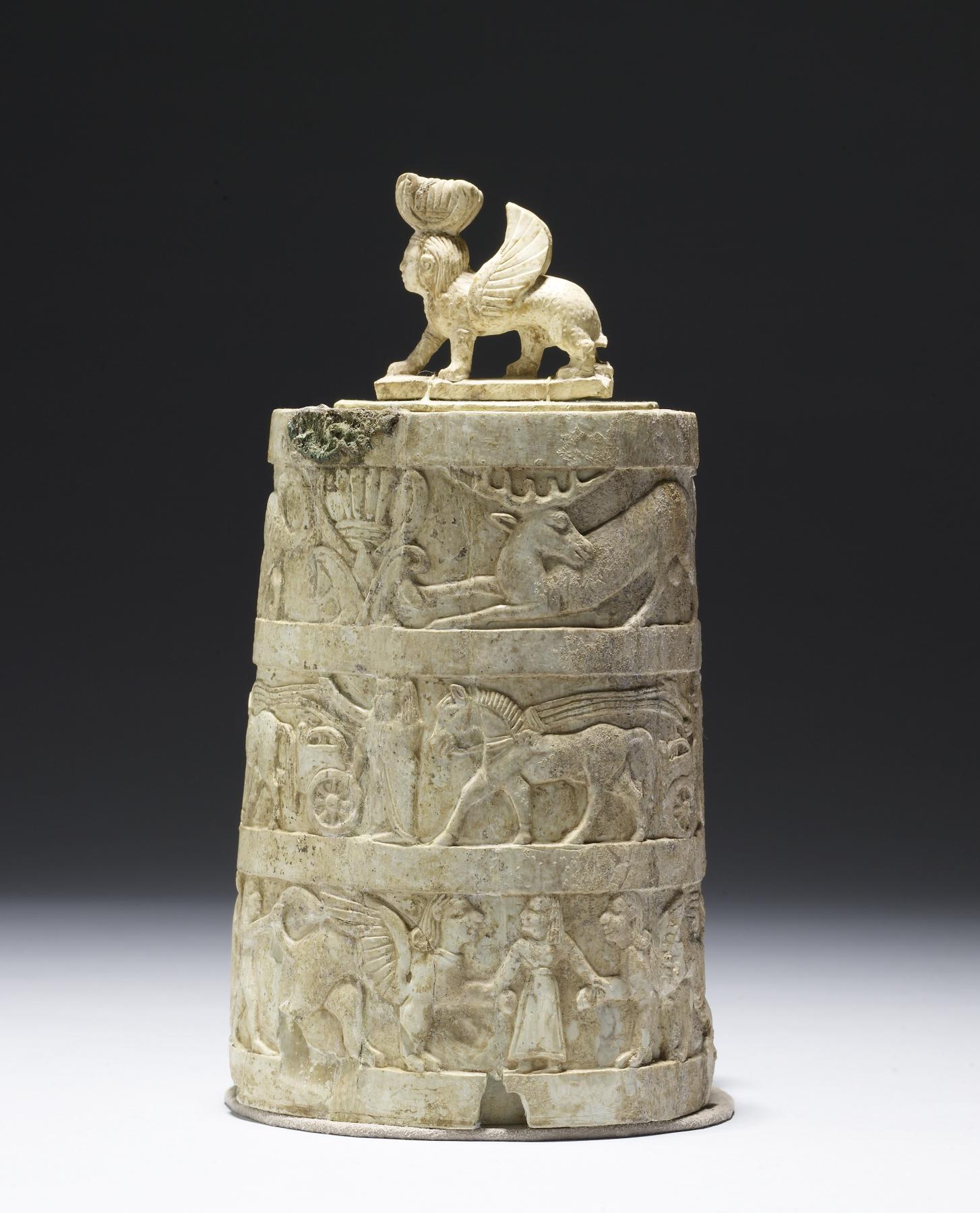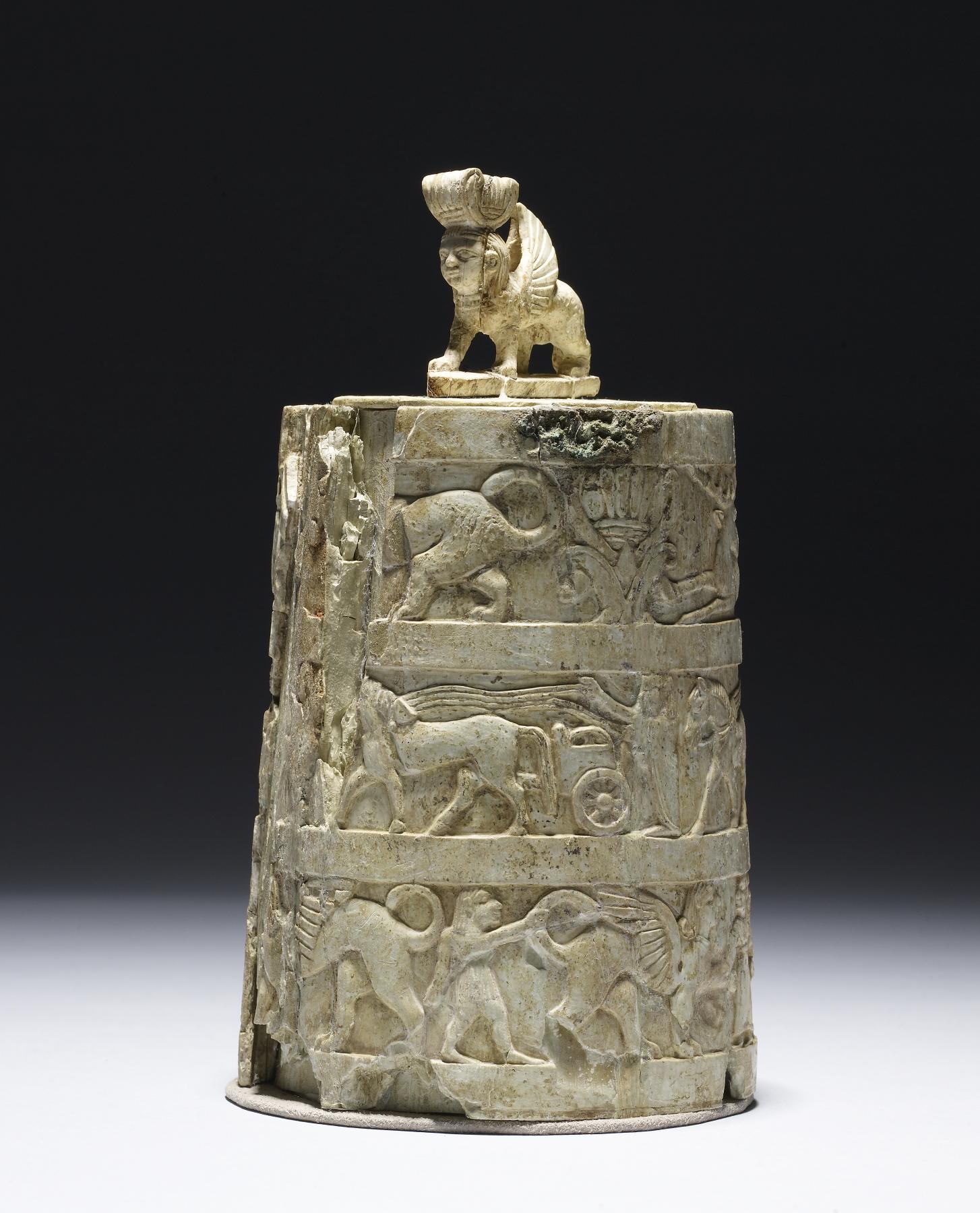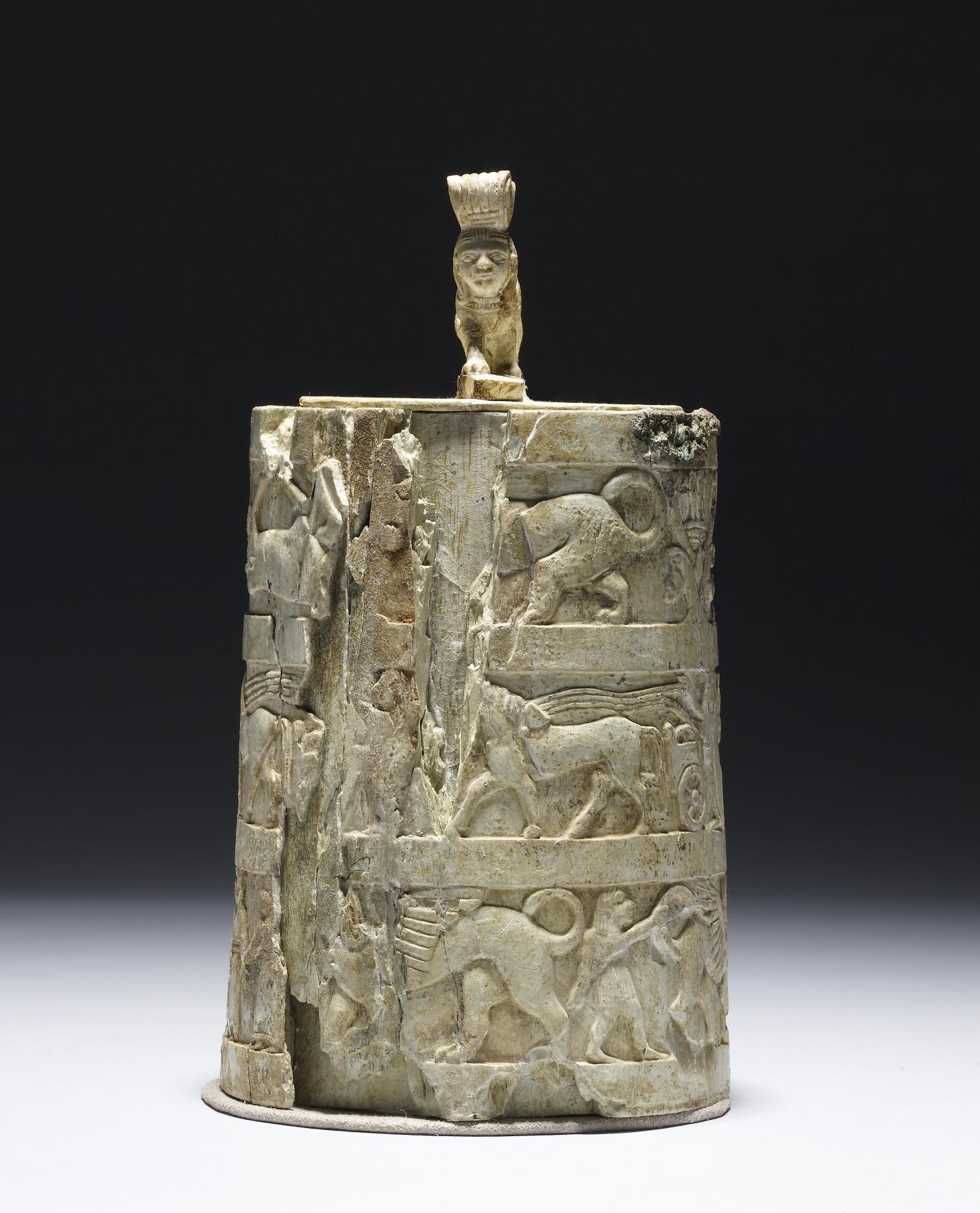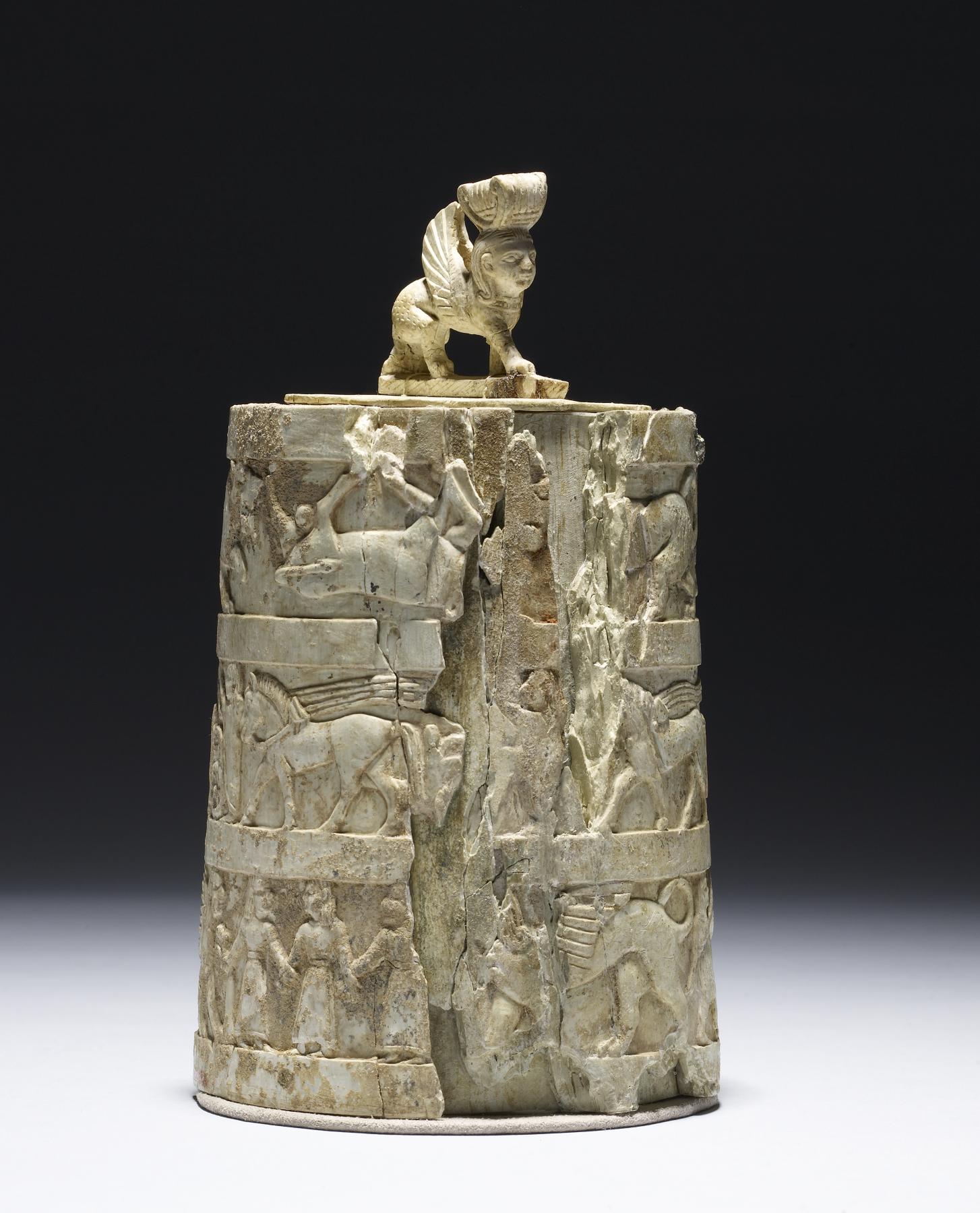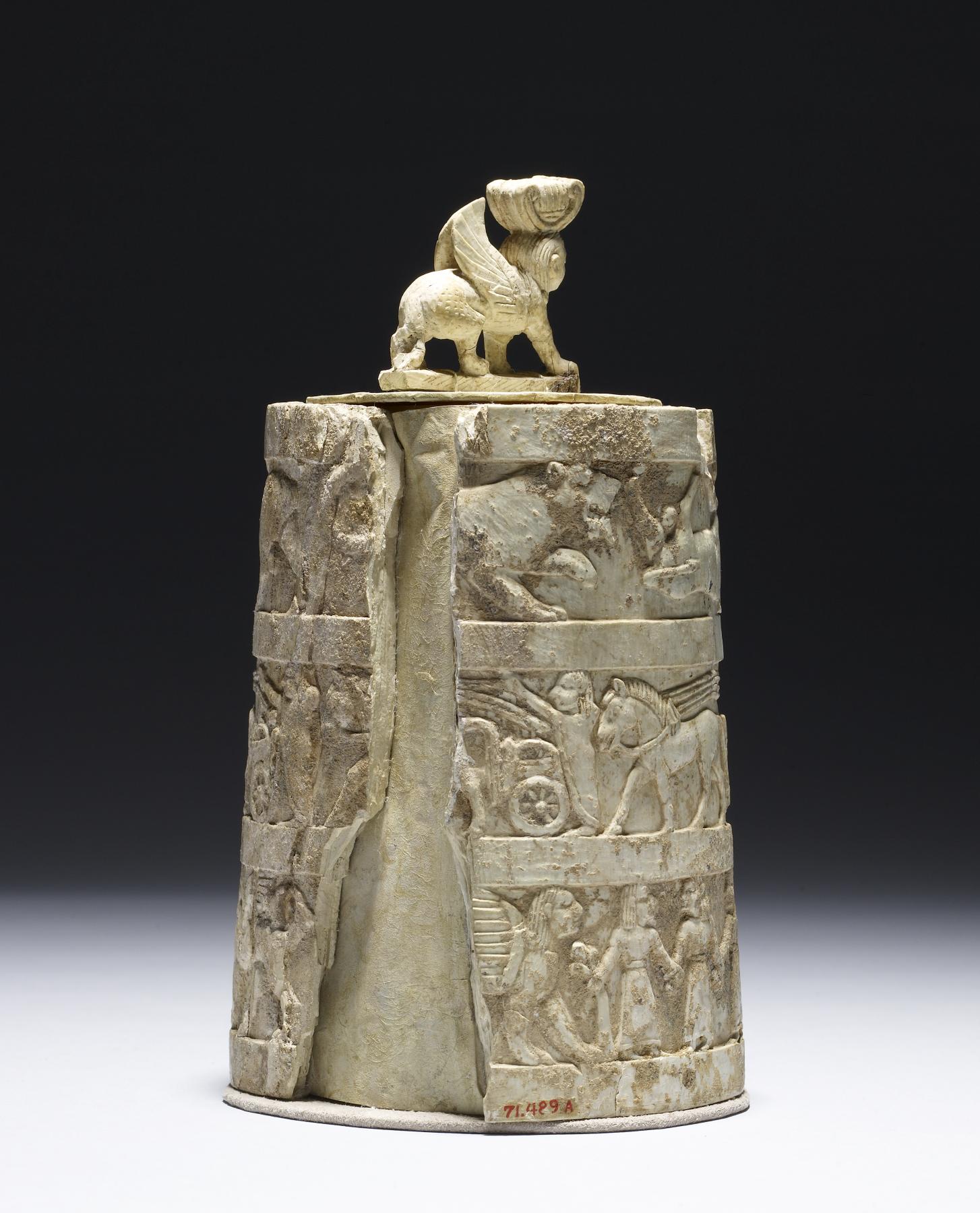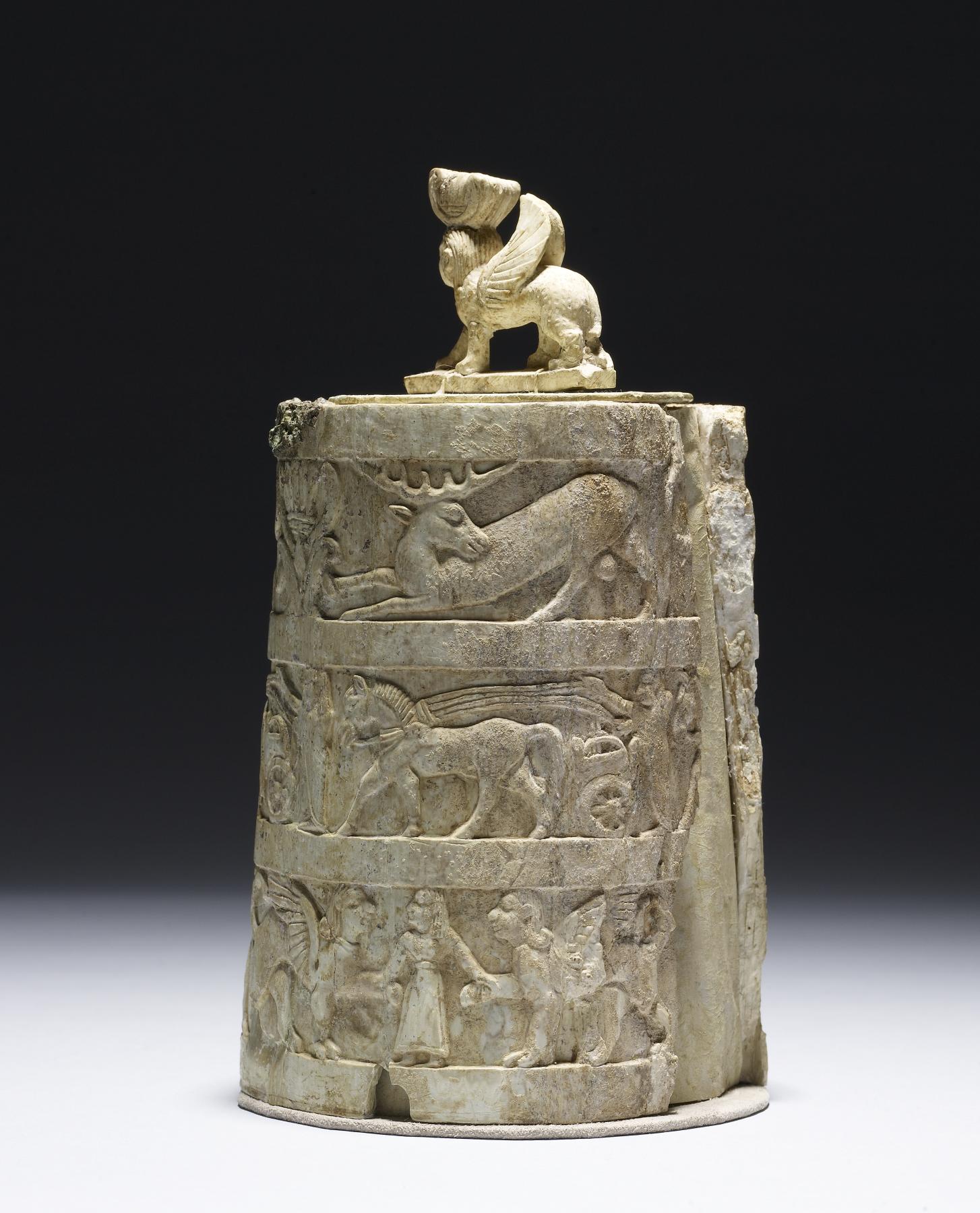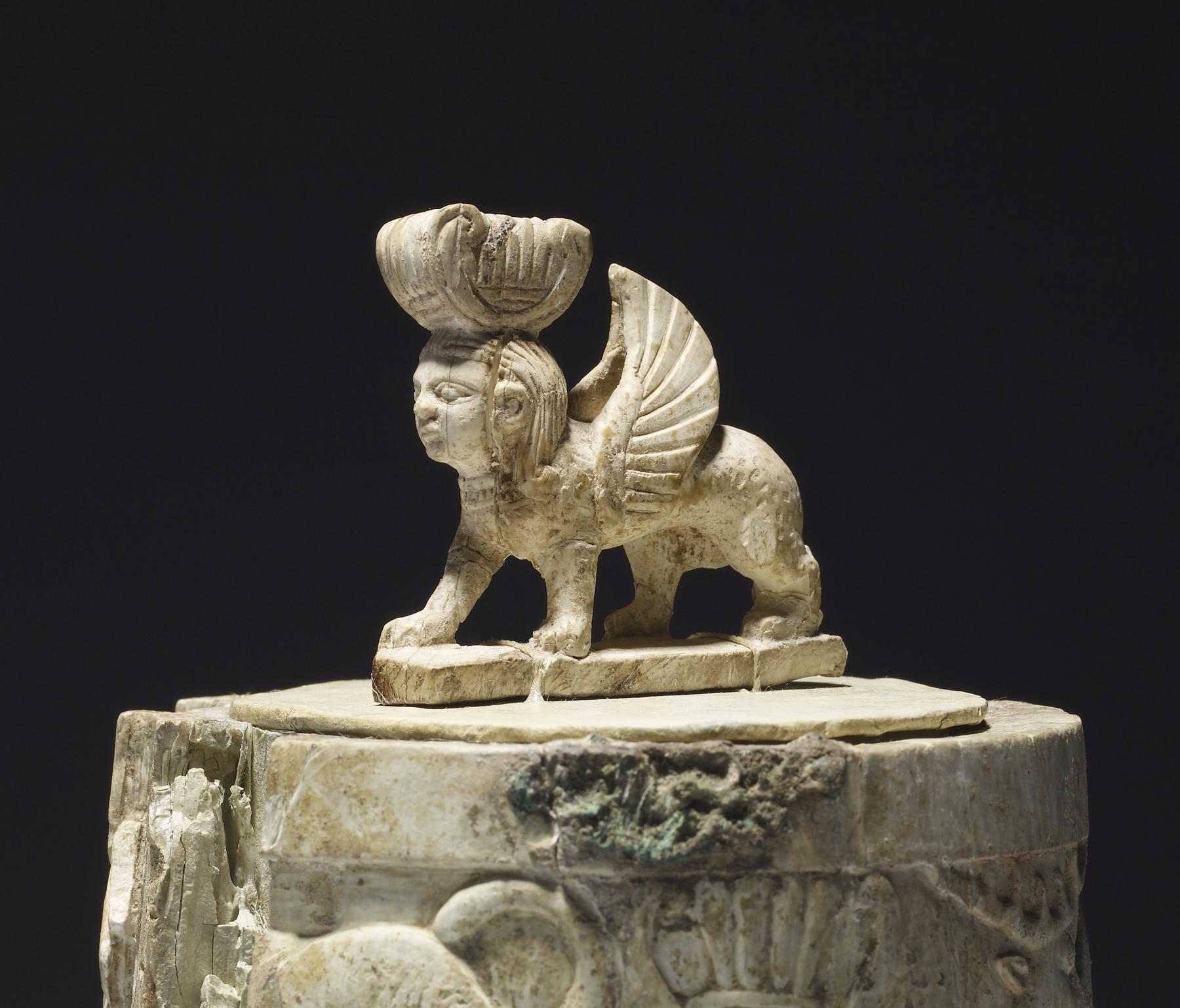Pyxis and Lid with Sphinx-Shaped Handle
(Roman Empire )
This pyxis (box) was fashioned in imitation of Phoenician luxury goods imported from the Near East. Although it incorporates many Near Eastern elements in its decoration, including sphinxes, a lotus plant, and chariots, the style of the figures shows it is clearly the product of a local Etruscan workshop. The handle of the lid takes the form of a standing sphinx wearing a lotus crown.
The 7th and early 6th centuries BC are known as the Orientalizing period because of the many eastern, or "Oriental," elements in the art. In this prosperous era of international trade, Etruscan artists manufactured luxury goods, such as those seen in this case, that reflect influences from the art of the eastern Mediterranean.
Provenance
Provenance (from the French provenir, 'to come from/forth') is the chronology of the ownership, custody, or location of a historical object. Learn more about provenance at the Walters.
Sorbo Necropolis (near the Regolini-Galassi Tomb), Cerveteri, 1877; Martinetti Collection; Dr. Bourguignon and M. Canessa; Bourguignon and Canessa Sale, Hôtel Drouot, Paris, May 19-21, 1910, no. 338; Dikran Kelekian, Paris and New York (?); Henry Walters, Baltimore, 1910, by purchase; Walters Art Museum, 1931, by bequest.
Exhibitions
| 1983-1984 | Ivory: The Sumptuous Art. The Walters Art Gallery, Baltimore. |
Conservation
| Date | Description | Narrative |
|---|---|---|
| 1/3/1957 | Treatment | repaired; other |
| 2/28/1979 | Treatment | cleaned; repaired |
| 2/28/1979 | Examination | examined for condition |
| 8/19/1982 | Examination | examined for condition |
| 8/19/1982 | Treatment | cleaned; examined for condition |
| 3/28/2001 | Treatment | cleaned; repaired; mounted |
Geographies
Italy (Etruria)
(Place of Origin)
Italy, Cerveteri (Place of Discovery)
Measurements
5 9/16 x 4 1/8 x 4 1/16 in. (14.1 x 10.5 x 10.4 cm)
Credit Line
Acquired by Henry Walters, 1910
Location in Museum
Accession Number
In libraries, galleries, museums, and archives, an accession number is a unique identifier assigned to each object in the collection.
In libraries, galleries, museums, and archives, an accession number is a unique identifier assigned to each object in the collection.
71.489

